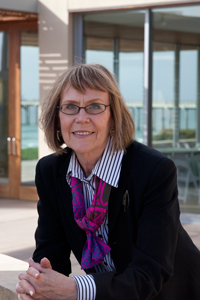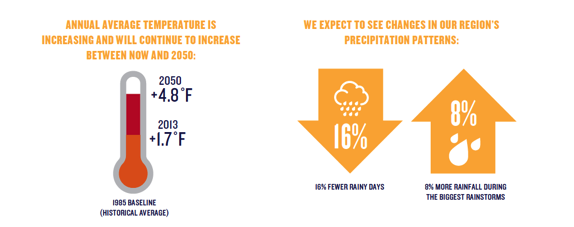Science
We expect to experience hotter and more humid heat waves and less frequent but more intense rainfall.
The science and why it matters:
- In the next 40 years, global temperatures could increase twice as fast as they have in the last 40 years; Southern California temperature increases will likely follow this trend.1
- We expect to experience more days of extreme high temperatures each year, and heat waves could be longer and more humid with less cooling at night.
- We expect to experience less frequent but more intense rainstorms, with heavy flood events like that of December 2010 in Mission Valley becoming more common.
A word from the scientists
"Actions we take now to reduce emissions of heat-trapping gases can slow warming in 2050 and beyond. In fact, what leaders at all levels decide to do in coming years will determine the climate and quality of life that our children and grandchildren inherit."
Margaret Leinen, PhD
Director, Scripps Institution of Oceanography, UC San Diego


Local changes in temperature and precipitation
In 2013, temperatures were 1.7°F above the historical average. By 2050, we expect to be 4.8°F warmer.1
By 2050, we also expect 16% fewer rainy days but 8% more rainfall during the biggest rainstorms.2
1. Analysis of CMIP5 (IPCC4) coupled global climate model historical and RCP8.5 simulations by the Scripps Institution of Oceanography (led by D. Cayan and S. Gershunov).
2. Higbee, Melissa, Daniel Cayan, Sam Iacobellis, Mary Tyree. 2014. Report from San Diego Hazard Mitigation Plan Update Training Workshop #1: Climate Change and Hazards in San Diego. ICLEI-Local Governments for Sustainability.
